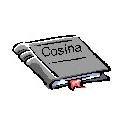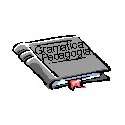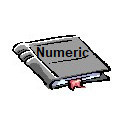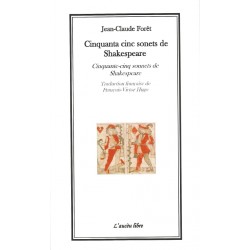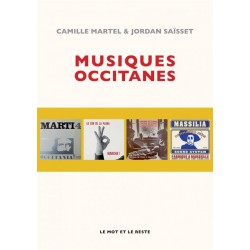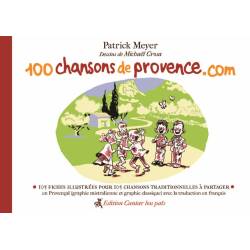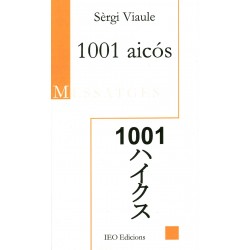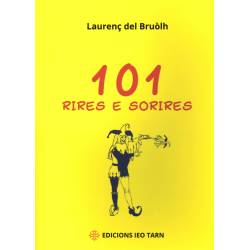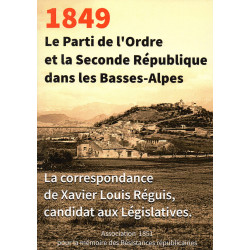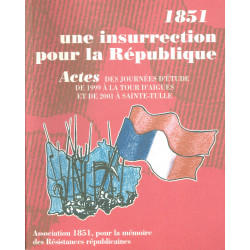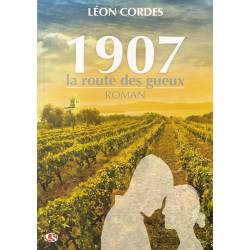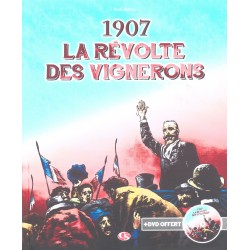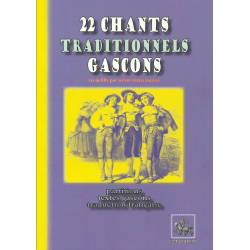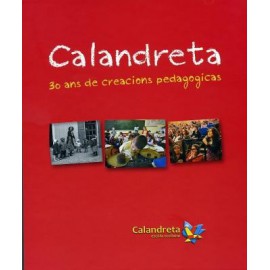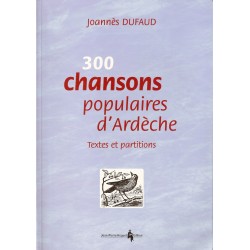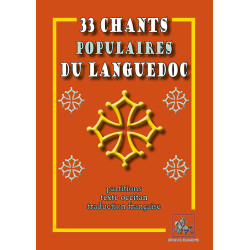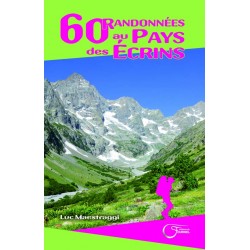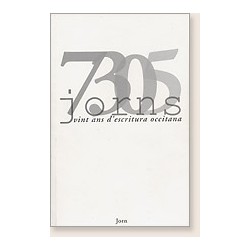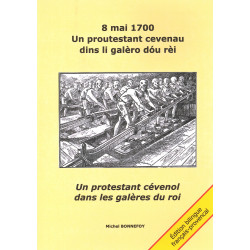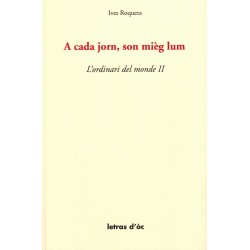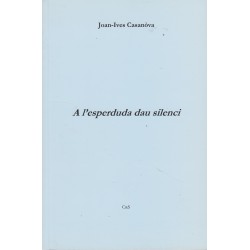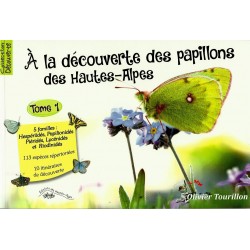Recently added item(s)
No products
Product successfully added to your shopping cart
There are 6 items in your cart. There is 1 item in your cart.
Books
- New Selection
- Books
- Music
- Videos - DVD
- Miscellaneous
- Revues, Journaux
Catalog
Links
Viewed products
-
 Mòstra me de mostres ! - Frederic Fijac
Mòstra me de mostres ! - Frederic FijacMòstra me de mostres ! - Frederic Fijac
-
 Salles-la-Source – Opération vilatge - Collectif
Salles-la-Source – Opération vilatge - CollectifSalles-la-Source – Opération vilatge...

Books
Occitan Books or on the Occitania country
Subcategories
BD - Humour
Livres BD - Humour en occitanBeaux Livres
Beaux Livres en occitanContes
Livres de Contes en occitanCuisine
Livres de Cuisine en occitan
Diccionari
Livres Diccionari en occitanEnfants
Livres Enfants en occitanGrammaire - Pédagorie
Livres Grammaire - Pédagorie en occitanHistoire - Etudes
Livres Histoire - Etudes en occitanLinguistique - Toponymie
Livres Linguistique - Toponymie en occitanLiterature
Books Literature in occitanMusique
Livres Musique en occitanMistral and friends
Nature
Livres Nature en occitanPatrimoine
Livres Patrimoine en occitanPoetry
Poetry books in occitanPractical
Practical books in OccitanTheater
Theater books in occitan language
Troubadours
Books about troubadours, men and women, whether Occitan or not.
A troubadour (trobador) was a composer and performer of Old Occitan lyric poetry during the High Middle Ages (1100–1350). Since the word troubadour is etymologically masculine, a female troubadour is usually called a trobairitz.
The troubadour school or tradition began in the late 11th century in Occitania, but it subsequently spread into Italy and Spain. Under the influence of the troubadours, related movements sprang up throughout Europe: the Minnesang in Germany, trovadorismo in Galicia and Portugal, and that of the trouvères in northern France. Dante Alighieri in his De vulgari eloquentia defined the troubadour lyric as fictio rethorica musicaque poita: rhetorical, musical, and poetical fiction. After the "classical" period around the turn of the 13th century and a mid-century resurgence, the art of the troubadours declined in the 14th century and eventually died out around the time of the Black Death (1348).
The texts of troubadour songs deal mainly with themes of chivalry and courtly love. Most were metaphysical, intellectual, and formulaic. Many were humorous or vulgar satires. Works can be grouped into three styles: the trobar leu (light), trobar ric (rich), and trobar clus (closed). Likewise there were many genres, the most popular being the canso, but sirventes and tensos were especially popular in the post-classical period, in Italy and among the female troubadours, the trobairitz.Editions
Digital books
Agach occitan: aspects de la culture d'oc...
Agach occitan - Aspects de la culture d'oc - Roland Pécout. Recueil d'articles publiés dans la revue Connaissance du Pays d’Oc pour « faire découvrir aux non-initiés une culture dans toutes ses manifestations ». Collection Lo gat ros, PULM.
20,00 €Cinquanta cinc sonets de Shakespeare -...
Cinquanta cinc sonets de Shakespeare - Fifty-five sonnets of Shakespeare by Jean-Claude Forêt. L'aucèu libre.
12,00 €Musiques occitanes - Camille Martel -...
Through 100 albums, this book by Camille Martel and Jordan Saïsset manages to define the Occitan music in all their multiplicity.
20,00 €Phonologie et morphologie du parler...
Phonologie et morphologie du parler occitan de Graulhet (Tarn) - Structure, contenu et rôle de la syllabe - Hervé Lieutard. Collection Lo gat negre, Presses universitaires de la Méditerranée – PULM.
15,00 €'Na lonja, lonja via - Sebastian Barry
'Na lonja, lonja via - Novel by Sebastian Barry - Translation in occitan of "A Long Long Way" by Jean-Pierre Lacombe
25,00 €'Quo sentia a cèl - Ca sentait le ciel -...
'Quo sentia a cèl - Ca sentait le ciel - Felip Angelau. Cela pourrait être un paysage du Périgord au bout de l’automne et des grandes pluies. Rien d’autre. Mais les yeux sont ceux de quelqu’un qui est né à Boulogne-Billancourt. Alors les frênes et les ronces se mêlent sans cesse aux insurrections. Version française de Jean-Pierre Tardif. Éditions...
9,00 €... de roge e de negre... / ... de rouge...
... de roge e de negre... / ... de rouge et de noir... Four short stories more full of pain than color. The culprit? Man or his structured whole: society, considered in all its savagery, when it becomes a "pack". Struggle, submission, constraint: suffering... Texts by Jean Louis Courtial, photos by Laurent Tabouriech. Edite-moi !
12,00 €... enfra lei trèus ... (limbs) - ......
... enfra lei trèus ... (limbs) - crossing the mists - Occitan poems, with a French version of the author Jean-Yves Casanova. Editions Jorn.
15,00 €...e los leons - …et les lions - Laurent...
...e los leons - …et les lions - This bilingual poem is a free adaptation by Laurent Cavalié of "Diotime et les lions" by Henry Bauchau
10,00 €100 chansons de Provence.com - Patrick...
100 chansons de Provence.com - Patrick Meyer, Michaël Crosa. 105 fiches illustrées pour 105 chansons traditionnelles à partager pour permettre à chacun de découvrir le patrimoine chanté (et conté) en Provence, et de s’en emparer pour lui donner une nouvelle existence et une nouvelle dimension. Cantar lou païs.
32,00 €1001 aicós - Sèrgi Viaule
1001 aicós - Occitan poetry by Sèrgi Viaule - Messatges (poesia), IEO edicions.
10,00 €101 rires e sorires - Laurenç del Bruòlh
101 rires e sorires - Laurenç del Bruòlh. No-nonsense stories in the Gallic tradition of the countryside. To hell with political correctness, self-righteousness and prevailing conformism. The author has not been mistaken in his choice of anecdotes, some of them saucy, to brighten up aperitif get-togethers with friends or the end of family dinners. IEO...
10,00 €11e Rencontre Internationale des Flotteurs...
La 11ième Rencontre Internationale des Flotteurs et Radeliers a eu lieu du 4 au 7 juin 1998 à Embrun, dans les Hautes-Alpes.
7,70 €18 Menú d'Occitània - Andrée Bertino e...
18 Menú d'Occitània - Andrée Bertino e Fredo Valla. Cooking book dedicated to 18 famous ladies in the occitanian history. Illustrations: Marie Voillat. Editing by Chambra d'Òc.
22,00 €1815 Napoléon dans les Hautes-Alpes -...
1815 Napoléon dans les Hautes-Alpes - Des témoins racontent (Witnesses tell ) - Documentary illustrated book of Jean-Pierre Jaubert on the crossing of Napoleon in the Hautes-Alpes.
26,00 €1849, Le Parti de l’Ordre et la Seconde...
1849, Le Parti de l’Ordre et la Seconde République dans les Basses-Alpes - Colette Chauvin (1849, The Party of Order and the Second Republic in the Basses-Alpes). The correspondence of Xavier Louis Réguis, candidate to the Legislative elections. Association 1851 pour la mémoire des Résistances républicaines.
20,00 €1851, Les Basses-Alpes à l’avant-garde de...
1851, Les Basses-Alpes à l’avant-garde de la République, Association 1851 pour la mémoire des Résistances républicaines.
20,00 €1851, une insurrection pour la République...
1851, une insurrection pour la République, Événements, mémoire, littérature (Tome 3). Association 1851 pour la mémoire des Résistances républicaines.
15,00 €1851, une insurrection pour la République...
1851, une insurrection pour la République - Résistance, mémoire et valeurs républicaines (Tome 4).
15,00 €1851, une insurrection pour la République,...
1851, une insurrection pour la République, Actes des journées d'étude de 1999 à La Tour d'Aigues et de 2001 à Ste Tulle. Association 1851, pour la mémoire des résistance républicaines.
15,00 €1907 La route des gueux - Léon CORDES (roman)
1907 La route des gueux - Leon CORDES (novel). First edition of the novel written by Leon Cordes in 1948, whose unpublished manuscript was rediscovered by his daughter Magali. Readers will enjoy rediscovering the atmosphere of the villages of southern France from the time of Marcelin Albert, where the soul of the winegrowing people is revealed. An...
19,90 €1907, la révolte des vignerons - Paul...
1907, La Révolte des vignerons en bande dessinée par Paul Astruc. BD grand format sur papier d’art avec en bonus un DVD de 52 minutes : documentaire historique, témoignages et clips musicaux du Groupe OC. Éditions Christian Salès.
19,90 €1961-2011 50 ans de literatura e non dins...
1961-2011: 50 ans de literatura e non dins las valadas occitanas - Franc Bronzat. Collection Scritture/escrituras, co-edicions Fusta Editore e Chambra d’Òc.
9,00 €1984 (Mila nòu cent ueitanta quatre) -...
1984 (Mila nòu cent ueitanta quatre) - George ORWELL, occitan translation by Pèire Beziat. 1984 es considerat coma una referéncia de la distopia. Qual coneis pas Big Brother coma figura metaforica del regime policièr e totalitari, de la societat de susvelhança tan plan coma de la reduccion de las libertats ? Editions des Régionalismes
23,95 €1984 - George Orwell - Felip Biu
1984 - George Orwell - Felip Biu (Nineteen Eighty-Four). Translation in occitan language of George Orwell's famous dystopian novel, originally published in 1949. Letras d'òc.
24,00 €200 devinetas - Deux cents devinettes en...
200 devinetas - Onorat Dambielle - Deux cents devinettes en pays d'Oc. Recueil de devinettes où s’apprécie toute la finesse de l’esprit populaire. Des jeux d’esprit où l’on joue avec la langue. Pour tout public, jeune ou moins jeune. Édition bilingue occitan-français. Letras d'òc.
12,00 €22 Chants traditionnels Gascons - Henri...
22 Chants traditionnels Gascons - Henri Marliangeas
9,75 €2800 signes - Alan Roch
2800 signes - Collection of weekly columns "Lo papieròt plombbés" published by Alan Roch in "La semaine du Minervois" between 2012 and 2014. Edicions IEO-Lengadòc.
16,00 €30 ans de calandretas - 30 ans de...
Calandretas - 30 ans de creacions pedagogicas. Bel ouvrage, livre de témoignages et corpus de textes. Publié par la Confederacion occitana de las escòlas laïcas Calendretas et l'Establiment d'ensenhament superior occitan APRENE
18,00 €300 chansons populaires d’Ardèche -...
300 chansons populaires d’Ardèche - Joannès Dufaud. Un livre album où chante l’Ardèche, du nord au sud : chansons occitanes, chansons françaises, toutes accompagnées de leurs partitions. Jean-Pierre Huguet éditeur.
32,00 €33 chants populaires du Languedoc
33 chants populaires du Languedoc (popular songs from Languedoc). A collection of popular and traditional songs from Languedoc accompanied by their scores. These are both traditional songs and recent songs, composed in the same style of repertoire. Éditions des Régionalismes.
11,95 €50 Juecs de comunicacion per parlar occitan
50 Juecs de comunicacion per parlar occitan. Jeux de sensibilisation à l'Alpin par Andrieu Faure (adaptation du livret de Jean-Pierre BAQUIÉ). ADALPOC.
2,00 €60 randonnées au pays des écrins - Luc...
Petit guide des randonnées dans le pays des écrins.
19,00 €666 - E avisa-te que soi pas Nostradamus -...
666 - E avisa-te que soi pas Nostradamus - Florian VERNET. Roman in occitan from languedoc. IEO Erau Edicions.
14,00 €700 ans de révoltes occitanes - Gérard de...
700 ans de révoltes occitanes: face au centralisme de l'État français, les Occitans n'ont jamais cessé de défendre leurs valeurs de liberté. Un livre fondamental de Gérard de Sède (réédition) pour connaître les épisodes souvent méconnus de l'histoire de l'Occitanie. Le Papillon Rouge Éditeur.
20,90 €7305 jorns - Vint ans d'escritua occitana
7305 jorns - Vint ans d'escritua occitana - 7305 days: Twenty years of Occitan writing, Bilingual anthology of the Jorn editions.
20,58 €8 mai 1700 - Un proutestant cevenau dins...
8 mai 1700 - Un proutestant cevenau dins li galèro dóu rèi - Un protestant cévenol dans les galères du roi - Michel Bonnefoy. Retipo la vido di proutestant souto Louvis lou quatourgen à travès aquelo d’un de mis aujòu dóu coustat meirenau, en reprenènt li doucumen qu’ai retrouba sus éu.
19,00 €A cada jorn, son mièg lum - Ives Roqueta
A cada jorn, son mièg lum (L'ordinari del monde II) - Ives Roqueta
15,00 €À ces cons de Français et ces couillons...
À ces cons de Français et ces couillons d'Occitans - Les Vingt lettres sur l'histoire de Robert Lafont n’épargnent personne: les cons sont du coté de l’État souverain englué dans sa superbe, et les couillons sont du coté des Occitans. Ce sont des innocents. Éditions Vent Terral.
12,00 €A chara o crotz - Cecila Chapduelh
A Chara o crotz - Cecila Chapduelh (À Pile ou face). Un recueil de poésie paru en occitan limousin avec traduction en regard, composé par une jeune auteure qui déploie une poésie musicale, qui fait chanter la langue en vers comptés et rimés, exploite des modèles anciens, se montre volontiers proverbiale. Éditions Lo Chamin de sent Jaume.
14,00 €A còps las montanhas que s’encontran -...
A còps las montanhas que s’encontran - Benoit Larradet. . Collection , editions Reclams.
17,00 €A l'endavans de Baroncelli - Babali e...
A l'endavans de Baroncelli : Babali e pouèmo famous - Livre sonore (format CD audio) proposant la lecture de plusieurs textes en provençal de Folco de Baroncelli, dont Babali, par Roland Pécout et Marie-Françoise Lamotte. CEP d'OC.
10,00 €A l'entrada del temps clar, Clara...
A l'entrada del temps clar, Clara d'Anduze, La fabuleuse histoire de Ramon de Perilhos - Trois pièces, centrées chacune sur des personnages de notre histoire : Aliénor d'Aquitaine, Clara d'Anduze et Ramon de Perellós (auteur d'un Voyage au Purgatoire). Anne Clément est dans la grande tradition du théâtre populaire qui donne à chacun l’accès à des pans...
12,00 €A l'esperduda dau silenci - Joan-Ives...
A l'esperduda dau silenci - Joan-Ives Casanòva. Editions C&S.
12,00 €À la bello eisservo – Au gré du vent -...
À la bello eisservo – Au gré du vent - Jan-Bernat Bouéry. Rouman. Edicioun Prouvènço d'aro.
23,00 €À la coursejado di cigalo d'or - Olivier...
À la coursejado di cigalo d'or - Olivier Bauza, David Ballon (In pursuit of the golden cicadas). Loule and her two grandchildren set off in search of a mysterious treasure, the golden cicadas, said to have been hidden by Saint Donat in various tourist sites in the Alpes-de-Haute-Provence, from the Gorges du Verdon to the Plateau de Valensole. Comic strip...
13,00 €A la découverte des orchidées des...
A la decouverte des orchidees des Hautes-Alpes - Olivier Tourillon. Following the success of his first book dedicated to orchids Hautes-Alpes (now unavailable), Olivier trunnion offers us a new book devoted entirely to orchids department. Editions des Hautes-Alpes.
22,00 €À la découverte des papillons des...
À la découverte des papillons des Hautes-Alpes (Tome 1) Olivier Tourillon Hespériidés, Papilionidés, Piéridés, Lycénidés et Riodinidés
25,00 €
 English
English Français
Français Occitan
Occitan












